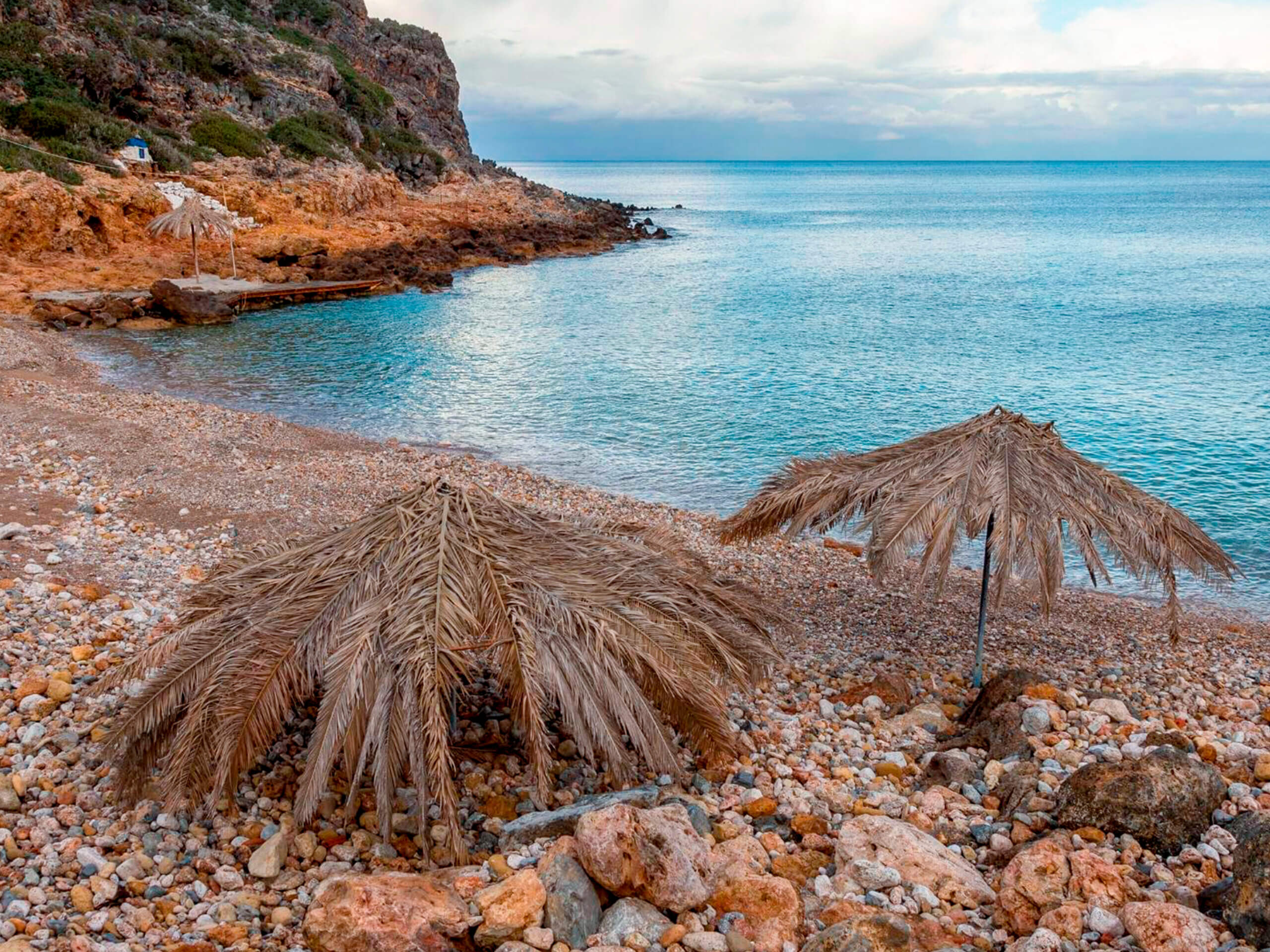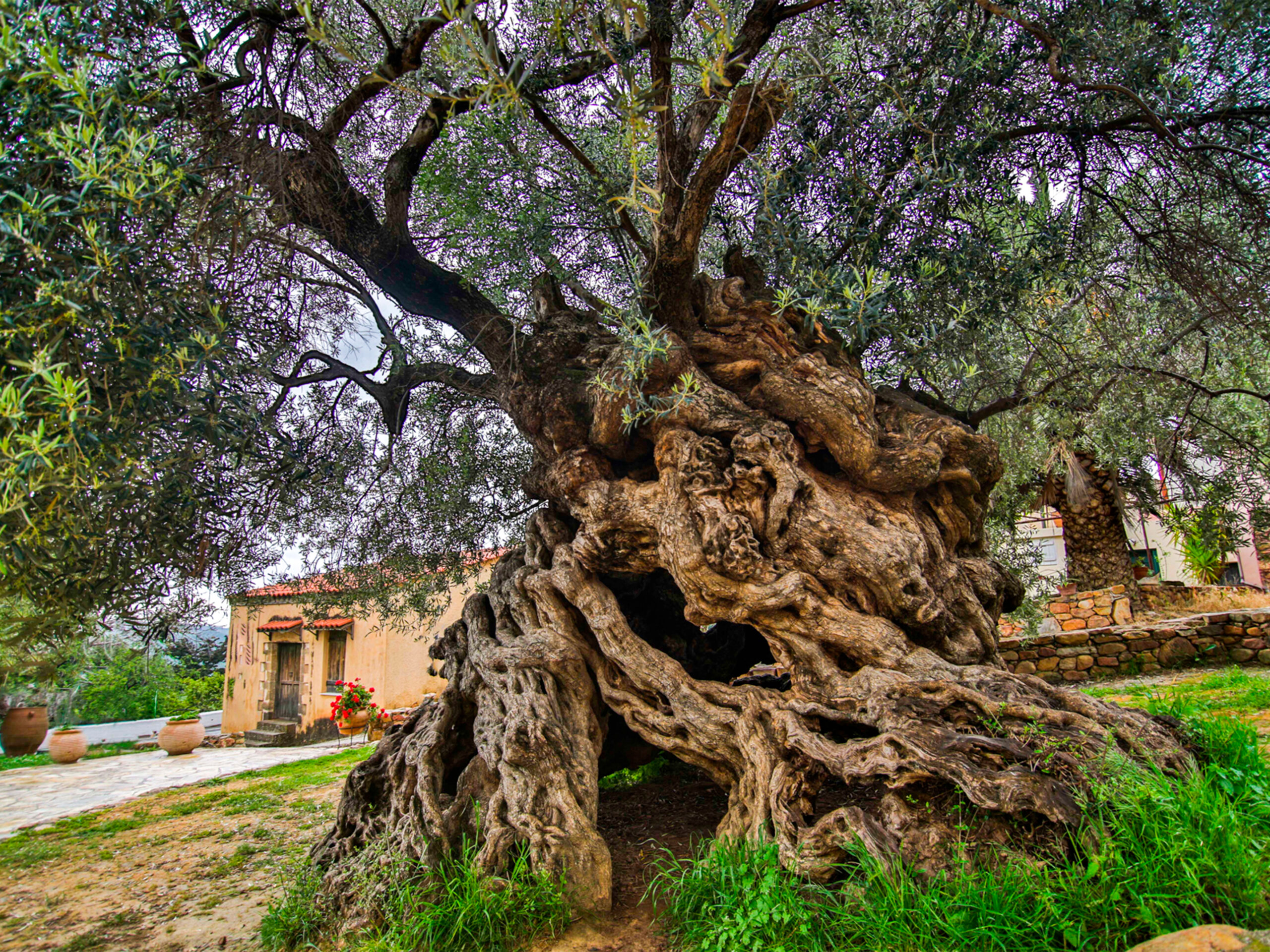Sights in Crete
Discover the most popular sights in Crete during your stay at Chrispy Waterpark Resort. The charming Greek island offers a plethora of attractions and sights that can cater to the interests of all types of travelers. From ancient ruins and turquoise waters, to picturesque villages and spectacular landscapes. Specifically, every town and city, every village and region holds a unique secret that is definitely worth uncovering.
Every different place holds a story and serves a significant reminder of the past. Whether you're interested in history, culture, nature, or simply soaking up the sun, this island has something for everyone. So, what do you think? Want to live the ultimate experience in the island of memories? Check out below some nearby recommendations while staying at Chrispy Waterpark Resort.
Ano Vouves monumental olive tree 6.6 km
Ano Vouves village is mostly known for the monumental olive tree. The latter declared a natural monument by the Association of Cretan Olive Municipalities because of its shape and the exceptional aesthetics of its relied truck, which is reminiscent of exceptional woodwork. The Ano Vouves monumental olive tree is also significant because the winner of the men’s marathon in the 2004 Olympic Games in Athens was crowned with a wreath made from its leaves. Despite claims by the locals that the Ano Vouves tree is the oldest tree in the world, this is not the case, as the tree of Azorias is the the oldest one in Europe, being around 3.400 years old. Regardless, the tree and the Olive Museum of Vouves are visited by thousands of people every year, from every corner of the earth.
Old Town of Chania 24.3km
The Old Town of Chania is widely considered one of the most beautiful sights in Crete. Nestled against the backdrop of the iconic Chania bay, the old town is a labyrinth of narrow streets and alleyways, lined with taverns, cafes and shops. At every turn, the visitor is met with reminders of the city's long and storied history, with samples of all the civilizations that have passed through Crete over the centuries. From the Venetian-style architecture to the Ottoman-era mosques, Chania old town is a truly unique place. Despite being bombed and burned several times over its long history, the old town has managed to retain its charm and beauty.
Byzantine Wall of Chania
The fortifications of Chania are some of the most impressive sights in Crete and defensive structures in Greece. The city's walls date back to the Byzantine era, when they were first built on the acropolis of ancient Cydonia. The Venetians, who conquered Crete in the 13th century, made use of the existing fortress and adapted it to their needs. Today, the fortress is still the highest point in the city, offering stunning views. The fort was originally connected to the town by three gates, but only one of these - the eastern gate - remains today, even if ruined, as the west gate was demolished in 1928, and the third gate led to the down town area. Despite its age, the fortress remains an imposing presence in Chania and is a favourite destination among tourists.
Ancient Kydonia
The city of Kydonia was built by the Minoans at the current location of the Old Town of Chania. It is well-known among the Crete sights and it used to be the third largest town of Minoan Crete, while it developed a very successful craft industry. Thus, the town became wealthy thanks to sea trade, with the city’s strategic, convenient position playing a very important role in the decisions of other traders. The ancient writers even mention Kydonia as “the mother of the Cretan towns”. The name is thought to come from either the mythical son of Minos and nymph Akakkalida or an old name of Crete (Chthonia).
Chania Splantzia
The Splantzia district in the north-east of the old town of Chania is perhaps best known for its central square and the Church of Agios Nikolaos. This church was actually part of a Dominican friary that was converted into a mosque for Sultan Ibrahim during the Turkish period. The mosque was then renamed "Hügar Tzamissi", which is thought to be a corruption of "Hükümdar Tzamissi" meaning "Mosque of the Sovereign". Hügar Tzamissi was home to a scimitar that belonged to a Turkish dervish who was the first to enter the city. While the city was conquered by the Turks, Splantzia served as the Turkish Quarter.
Archaeological Museum of Chania
The Archaeological Museum of Chania is a must-see for anyone interested in the history of the region. Located in the historic district of Halepa, the museum houses a wide variety of artifacts from different periods, including the Neolithic, Late Minoan, and Roman eras. Highlights of the collection include Minoan finds from the city and surrounding area, and historical sculptures and jewelry.
Folklore Museum of Chania - Cretan House
The Chania Folklore Museum, or "Cretan House" is a private museum founded by two women who love the history and culture of their island. Specifically, the museum provides visitors with a glimpse into the everyday lives of rural Cretans in the first half of the 20th century. The textiles and embroideries on display are particularly impressive. Also of note are the embroidery tables which are indicative of the local traditions.
Maritime museum of Crete
The Maritime Museum of Chania is in the Venetian Fortress Firkas and dates back to 1973. It was built in order to preserve and present Cretan, but also Greek in general, maritime traditions. The museum houses a wide variety of documents and artifacts related to maritime history, divided into 13 sections spanning two floors. Additionally, the lowest floor exhibits a chronicle of Crete's union with Greece, while the first floor is dedicated to maritime history from the Second World War to the present day. Some of the exhibits include naval maps, models of ships and paintings related to Greek maritime history.







